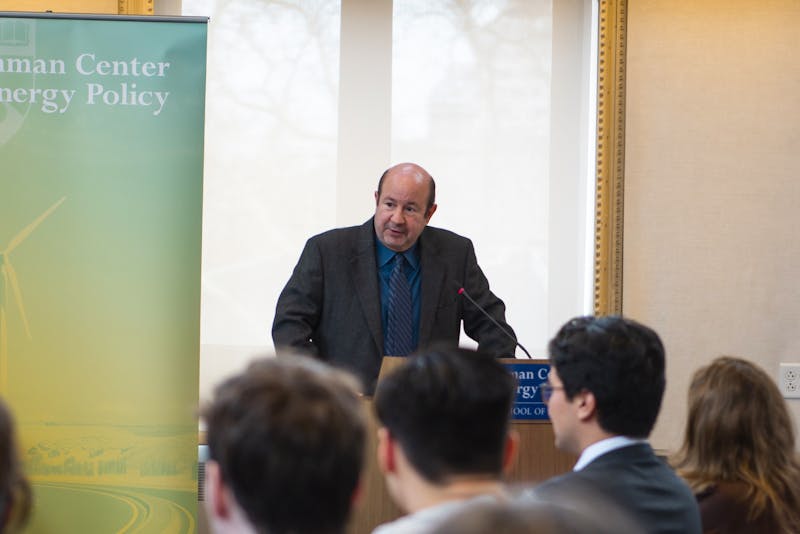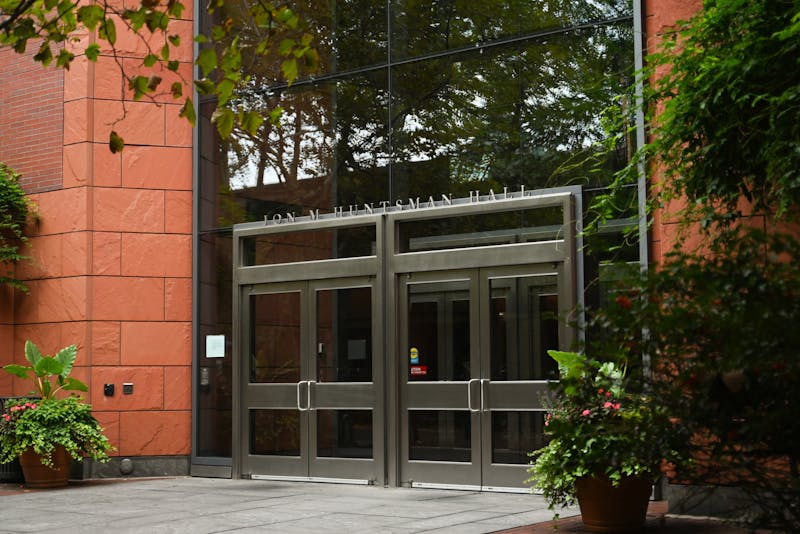In the arts, just like in the sciences, something new is always being invented at Penn. An exciting sampler of what's happening will be on view this week at the first annual Spiegel Symposium.
Penn's responsibility to support the arts is gigantic, and the task is daunting. Universities have a duty to foster human creativity in the face of inhuman destruction and promote a culture of ideas in a world scarred by horrific deeds. To do so, we need to study the arts in our classrooms and libraries. We must bring art to life on our stages and in our galleries. And every day we should add to humankind's inventory of poetry, music, architecture and the other arts.
Penn's resources for this vital work are prodigious. We are the only university to have a gallery like our "intrepid" Institute of Contemporary Art (that's what The New York Times called it just last month).
The University Museum holds the most significant collection of archaeology and anthropology that you'll find on any campus.
WXPN is one of the few college-based radio stations to have a major share of a region's listenership.
Penn Presents brings the big names of theater, music and dance to 37th and Walnut. And the College House Music Program puts lessons and professional performances right in the living rooms of Penn students.
We still do less than I would like, but Penn's arts scene is beginning to add up to more than the sum of its parts. The annual welcoming party for freshmen at the Philadelphia Museum of Art strikes the right symbolic note, and it already seems like a venerable tradition although it's just a few years old.
This semester the new Emily and Jerry Spiegel Fund to Support Contemporary Culture and Visual Arts has inaugurated a cluster of promising activities. There are special freshman seminars devoted to modern art, after-hours parties at the ICA for every college house and a program of visiting artists and scholars in the School of Design. The highlight of the Spiegel program will be a special, student-friendly symposium focusing on the ICA's "outstanding" exhibition devoted to the radical artist Barry Le Va.
Le Va's art -- beautiful and intense, angry and cerebral -- upset the bland artistic norms of the 1960s and continues to be provocative. His work captures some of the violence of those times. There are meat cleavers embedded in an ICA wall, smashed glass on the floor and bullet holes around a target, created by the Penn's Police sharpshooter.
But there are also creations of supreme (although sometimes hidden) rationality, laid out at large scale in three dimensions. The work raises questions about who makes art, the human quest for order and our propensity for violence and the definition of art itself.
The Spiegel Symposium will examine these and other important questions posed by the arts of the late 20th century. Four lively panels of historians, critics, curators, artists and architects will grapple with the implications for history, art, architecture and cinema. There will be lots of discussion and interaction -- and refreshments.
Barry Le Va himself will talk about his art today, at 5:30 p.m. at the ICA. Tomorrow, the panels will convene in Room 110 of the Annenberg School for Communication, and at 6 p.m. noted cultural critic and historian Greil Marcus will provide the finale with a keynote address in Meyerson Hall Room B1. Marcus is the author of Mystery Train: Images of America in Rock 'n' Roll Music (1975) and the just-published Like a Rolling Stone: Bob Dylan at the Crossroads.
The Daily Pennsylvanian is an independent, student-run newspaper. Please consider making a donation to support the coverage that shapes the University. Your generosity ensures a future of strong journalism at Penn.
DonatePlease note All comments are eligible for publication in The Daily Pennsylvanian.







